DIY Training
 Want to improve? Want a training program that is tailored especially for you? Damian Grundy shows how to structure your own basic training schedule.
Want to improve? Want a training program that is tailored especially for you? Damian Grundy shows how to structure your own basic training schedule.
Okay, what I am going to discuss with you today may not seem too pleasant, so before I start, I want you to take a couple of deep breaths and sit down firmly in your seat (it might even be best if you can strap yourself to the seat).
And now I can begin, remember; relax and this won’t hurt a bit. Now it is time to talk about training… Whoa up there, don’t flick to the next page in disgust or run from the room in fear. Training is fun. Honest! Truth is, I love training. I love riding fast. I love sweating on the indoor trainer. I love eating well knowing that what I am eating is fuel for tomorrow’s training and not merely another deposit on a growing waistline. I love hitting the pillow at night so weary that sleep comes easily. I love losing weight and feeling light. Even better I love racing hard. Best of all I love mastering the things that I was not previously able to do. All of these things are made possible through good hard training. So why would training be anything other than great fun?
I have a confession—there is one thing that I truly hate about training, or racing for that matter, and that is headwinds!
Training is fun; I want you to recite this. Make it your mantra, ‘training is fun, training is fun, training is fun’. Okay for those of you who don’t know what a mantra is, don’t sweat it, just keep saying to yourself ‘training is fun’ like Ali’s, “I am the greatest”.
Now the chances are that you are a ‘normal person’. That is, you have a job, a husband or a wife, a mortgage, maybe some kids or maybe all of these apply to you. As a result, any training plan needs to be flexible and built around the other important things in your life—that way your time on the bike will remain fun and not ruin your marriage or jeopardise your job. First and foremost, the key to any successful training plan is a desire to ride because it is fun and makes you feel good.
Now that I have convinced you that training is truly fun, maybe your next question is ‘How much training is enough?’ You could also ask ‘How long is a piece of string?’ These are truly questions with no answer. I have seen riders train for 40 hours a week and I have seen others train successfully for three hours a week. One of the many beautiful things about mountain bike racing (both XC and ‘team enduro’ style events) is that the length of the races is not so long as to make huge training volumes absolutely essential. You can do just fine on very limited training.
Hint—Measure and monitor your training volume. Road riders will generally use the distance covered as their measure. For mountain bikers I favour using time spent on the bike. Whether it is road or off-road the hours logged will be easiest to monitor effectively. Having recorded your training time you can easily monitor volume and progression.
Quite often I hear the excuse, “Oh I just don’t have that much time so there isn’t any point in training”. Complete nonsense I say. Another point, there are many famous coaches who have said that the most important thing about any good training program is the recovery. So if you are one of those people with limited training time then smile because your recovery is well in hand.
At the end of the day it is all about making the most of the time that you have. Spend no time worrying about what you might be able to do if you had more time. Spend even less time giving thought to how much or what type of training your competitors are doing. It really doesn’t matter.
Training Strategy
Now the secret to maximising your training is to ‘have a plan’. My objective with this article is to provide you with some ideas and an approach that will enable you to develop an effective training plan for yourself.
First we need to start with a quick checklist:
-
Goals
The first step in developing a plan is to outline your goals. You need to know where you are going. You might have one goal or you might have a few. Be realistic when setting goals, they must be achievable. It could be as simple as improving your fitness and skills or completing an event that you have entered. Limit the number of goals that you set. -
Strengths
Write down your strengths. Be proud of them. These are your advantages over your opponents. Don’t neglect your strengths, use them and develop them. -
Weaknesses
Before you do anything please get an A4 piece of paper. Draw four columns down the page (see the example here). At the top of the first column write ‘Weakness’. At the top of the second column write ‘Evidence’. At the top of the third column write ‘How to Improve’. And at the top of the fourth column write GETTING BETTER!
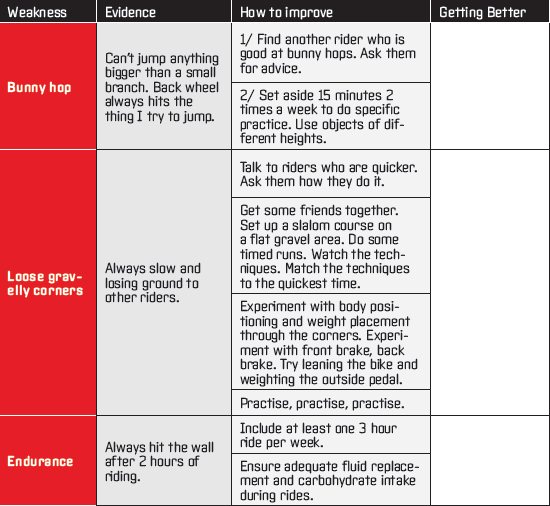
So for my approach you can see that you need to identify your weaknesses. That is the start, but only the start. It is important that you can list evidence to pinpoint the problem that you have. This will help you target the way forward and become the measure of how you are improving.
For example, in the bunny hop for evidence you list that you can’t jump anything bigger than a small branch and your back wheel always hits the thing you are trying to jump. So if you start to jump things, even the smallest, without hitting your back wheel then progress is being made.
You need to clearly set out your strategies— that is how you are going to work to improve your weaknesses. The most important thing is to make sure that you work at each of your weaknesses consistently.
Hint—Never try any specific skill more than three times if you are failing. If you fail more than three times in a row you are practising to fail! After a third failure go back to something you can do well and practise that for a little while then come back to the failed skill at a later time.
Finally, give yourself a big tick in the fourth column of your table every time you practise or train on a weakness. After a short while you should see not only a growing number of ticks but also improved ability in your weakest areas. As a hint here especially with technical skills, sometimes all the practise in the world won’t help when the skill methodology is incorrect. If you are trying but failing to see improvement, seek out some expert guidance. Often one session with a skilled expert who is a good teacher can make all the difference.
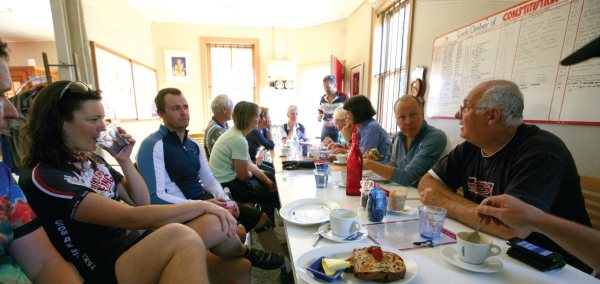
Training Options
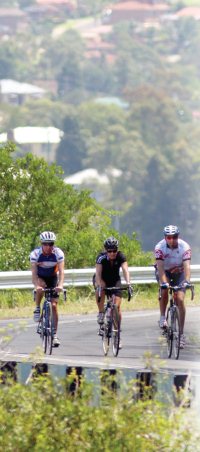 What training options do you have? For example, can you learn to be a good climber if you live in a flat area? Or is it possible to develop good off-road skills if you don’t have access to any real mountain bike terrain? Essentially, no particular type of terrain is absolutely necessary and in most cases you can compensate for the lack of any particular terrain by being clever in your training in other areas.
What training options do you have? For example, can you learn to be a good climber if you live in a flat area? Or is it possible to develop good off-road skills if you don’t have access to any real mountain bike terrain? Essentially, no particular type of terrain is absolutely necessary and in most cases you can compensate for the lack of any particular terrain by being clever in your training in other areas.
-
Road
Roadie training can be very useful in particular for the development of endurance and cadence capacity. -
Off-Road
Useful for skills and specific fitness, and of course it is fun! -
Flat
Very good for developing a smooth fast pedalling technique. It is also useful for working on your speed, strength as well as heart rate specific endurance intervals. Additionally, I always found long flat rides to be great for improving your mental toughness! -
Hilly
Good for strength development and learning to pace yourself effectively. Here’s another hint—on some days when training in the hills practise controlling your climbing speed and then really work hard at the crest of the hills and on the downhill runs. This will develop your ability to transition effectively from climbing to descending. Most riders lose time over the crest of climbs because they relax before they have fully accelerated. -
Mountainous
Good for strength endurance development and climbing ability.
Keep your plan interesting by incorporating lots of variety. A quick list of the broad range of training types will include endurance, skill/technique, strength, speed and power. When preparing a training plan I always have a relatively simple guide in mind that helps in the ordering of the different training types as follows:
-
Work on skills first and when you are freshest
-
Train speed and power after your skills
-
Then train strength
-
Last of all, train for volume (that’s the long rides)
This order can be applied to a weekly training plan or a longer term plan. Needless to say, it will be difficult for most to include all of the training types within a weekly plan. In a longer term plan, I like the idea of maintaining most of the training types right throughout the year.
Remember that the most fun known to a cyclist is riding a mountain bike off-road. You should always take it easy the day before riding off-road. This will increase your enjoyment of the experience as well as improving your skill development.
Hint—The first 20 minutes should be spent spinning your legs to warm up, ideally before you hit the dirt. Likewise, spin your legs for 20 minutes at the end of your offroad ride.
Useful Equipment
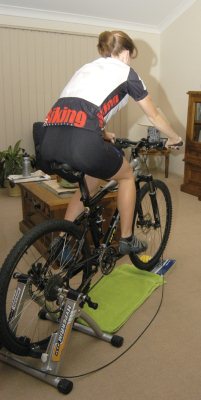 Here’s some stuff that will come in handy for your training plan:
Here’s some stuff that will come in handy for your training plan:
-
A mountain bike!
-
A heart rate monitor
-
An indoor trainer
-
A road bike
-
A gymnasium—strength training is very valuable and should be a part of a well rounded training program.
Work out a weekly schedule. Monday is usually a rest day. I believe that Monday should not have any real training. I see athletes who, after a long hard weekend of training or racing, then try to do a gym session on the Monday. This is not the best plan.
Friday is also a rest day. But on Friday I am happy enough to include a gym session, but not before a racing weekend.
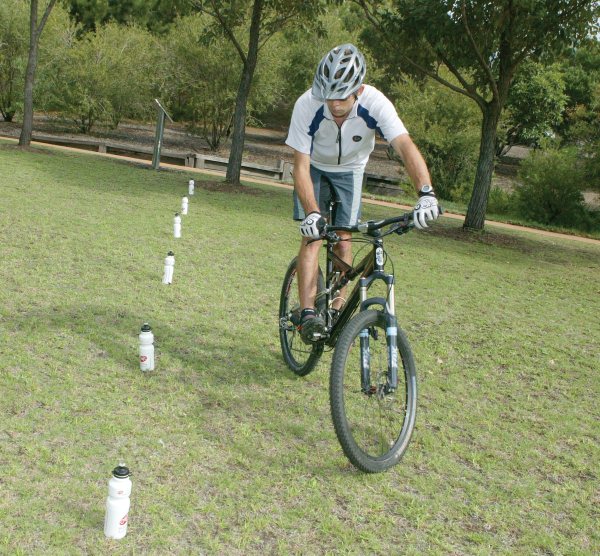
Rest Day Hint #1—A rest day is rest day. An easy ride, spinning your legs with little resistance for between 20 minutes and one hour is good. Two hours of riding on a recovery day will only be recovery if your weekly training volume is in excess of 25 hours. Don’t be afraid to have a day off the bike. Go for a swim, a walk or a jog if you feel compelled to do something active. Preferably, spend time with the kids or the wife/husband. In short do something relaxing that doesn’t involve substantial time on the bike.
Rest Day Hint #2—After a heavy training week or a very hard training day, it is best if you can ride your bike easily for at least 30 minutes on the subsequent rest day. This active recovery is far more beneficial than inactive recovery.
Saturday is a great day for off-road training, except if Sunday is a race day. If Sunday is a race day then Saturday should be a short ride, maybe 30 minutes to one hour. Some short intensity efforts on this ride can be good but always finish with some light spinning.
Here is a sample four week training plan. Stretch regularly and do sit-ups, push-ups and other simple strength exercises at least three times a week.
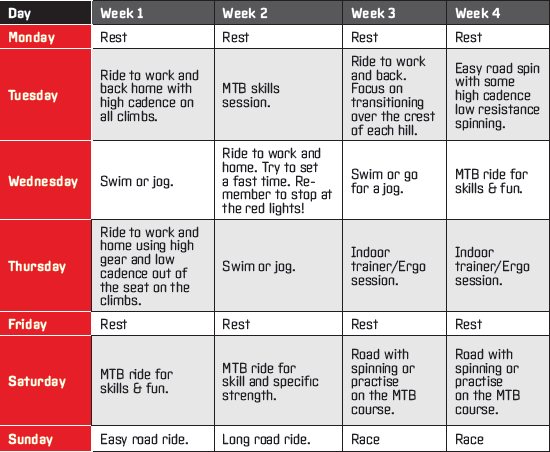
There are just so many possible training exercises that you can use; there’s literally infinite variations. Train hard some times and easy at others and just keep experimenting. Above all, don’t lose sight of why you ride bikes; and that’s because it’s great fun!
Damian Grundy has been riding and coaching since the early days of mountain biking in this country. Over the years he has won National Championships and coached some of our best riders; Cadel Evans and Mary Grigson to drop just a couple of big names. While he is now living a relatively quiet life on a farm in rural Victoria, he is still coaching and helping mountain bikers reach their goals, no matter how modest. If you want Damian’s guidance and a more personalised training program, shoot him an e-mail at DamianGrundy@bigpond.com


 Want to improve? Want a training program that is tailored especially for you? Damian Grundy shows how to structure your own basic training schedule.
Want to improve? Want a training program that is tailored especially for you? Damian Grundy shows how to structure your own basic training schedule.

